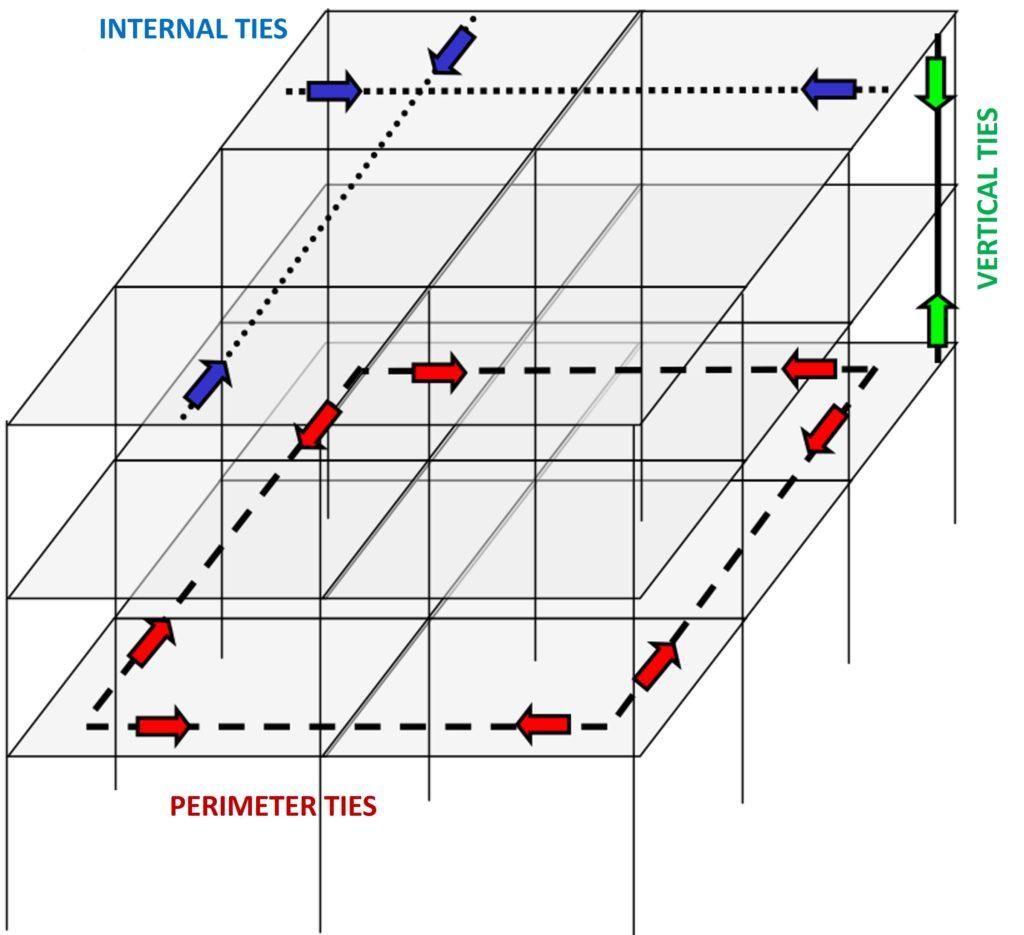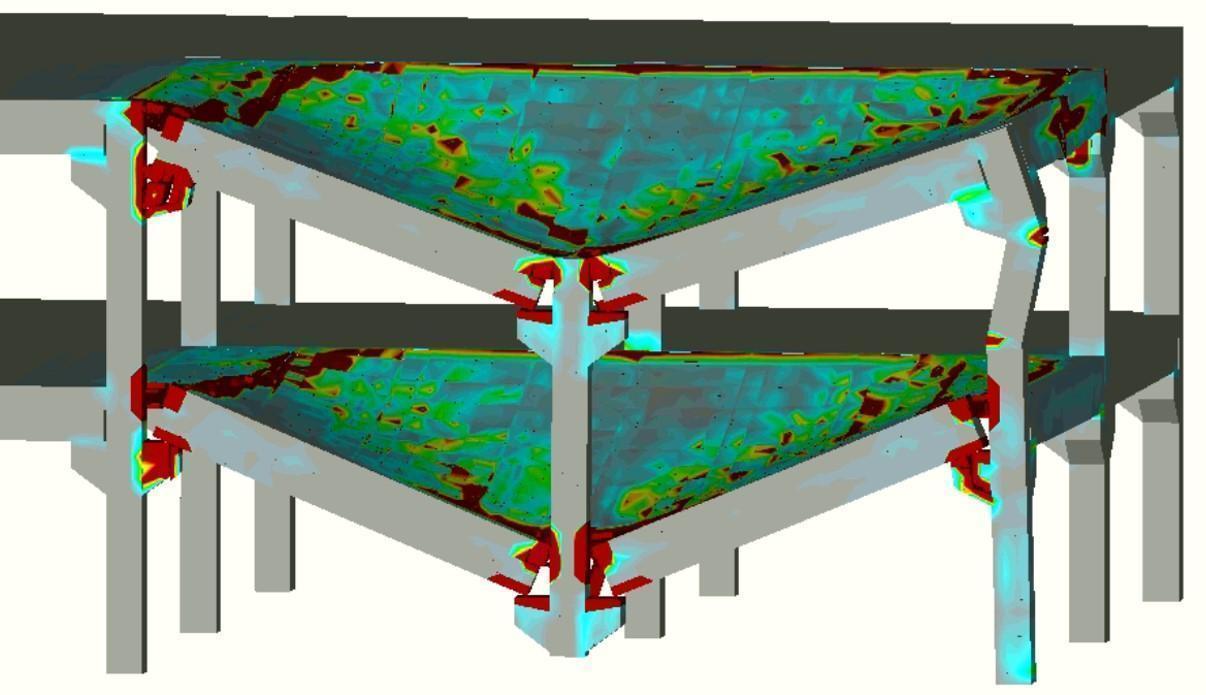ENTIRE
Entire: New structural stabilisation systems to prevent building progressive collapse
Entire is a project funded and hosted at Universitat Politècnica de València.
The project’s main objective is to design new structural stabilisation systems to prevent building progressive collapse by improving the structural efficiency of all structural components that can arrest a chain of failures.
The project started in 2023 and spans a total duration of 2 years.
KEY CHALLENGES
Buildings can be subjected to extreme events, including, for example, natural disasters (e.g. hurricanes, tsunamis, and floods), accidents (e.g. explosions and vehicle impacts) and provoked actions (e.g. terrorist attacks). Extreme events often cause local damage to the structure of buildings that can lead to global collapse. This is where the term “progressive collapse” comes in. It is understood as the process whereby local damage causes a series of failures, leading to the complete collapse of a structure or a disproportionate part of it. To address this issue, relevant standards propose specific design measures to make a structure insensitive to local damage. This property is now known as “robustness”.
The most advanced design standards and guidelines in the field of progressive collapse of structures recommend that buildings should be sufficiently robust to avoid the propagation of initial or local failures. To this end, they are based on providing sufficient continuity to the structure to enable alternative load paths to be activated in the event of the loss of any element. This continuity is implemented through so-called ties. The correct functioning of the ties is crucial as a last line of defence to avoid the propagation of local failures. However, there are situations where it is impossible to activate the ties, leaving the structure vulnerable to failure propagation. For example, one case where it is impossible to activate the ties is when the initial-local failure is located near the corner columns. On the other hand, a serious problem posed by the ties (structural continuity) is that they can pull the rest of the building in certain failure scenarios, leading to collapse. This effect is particularly relevant in the case, for example, of buildings with large spans, post-tensioned slab floors or the presence of transfer beams.
Continuity in the form of ties has limitations that need to be studied, so reliable alternatives must be considered.


NEW STRUCTURAL STABILISATION SYSTEMS
The use of column stabilisation elements that would work under axial compressive loads is envisaged. With appropriate connections to the columns, bridging the failing column and stabilising the adjacent columns, the ties will be allowed to operate at full capacity under the catenary actions in beams (or membrane in slabs) caused by the failure of a load-bearing element, thus avoiding progressive collapse.

OBJECTIVES
The project’s main objective is to design new structural stabilisation systems to prevent building progressive collapse. This general objective will be achieved through three specific objectives:
- Objective 1: Identify target buildings and establish design requirements.
- Objective 2: Design structural stabilisation systems to avoid progressive collapse.
- Objective 3: Develop simplified tools and practical design recommendations.

METHODOLOGY
Entire is organised in three Work Packages (WP) using an interdisciplinary methodology.
WP1. Definition of target buildings and design requirements.
This WP will determine the target buildings where the installation of the new structural systems will be beneficial. To this end, a compilation and analysis of real cases of collapse will be carried out to determine the most vulnerable structural typologies. Structural robustness criteria and identifiers will be defined and used together with consequence models to allow the systematic identification of buildings where new systems will bring benefits. This WP also aims to determine the preliminary design requirements of the new structural systems.
WP2. Design of prototypes.
In this WP, prototypes of structural stabilisation systems for new and existing buildings will be designed to prevent progressive collapse. One of the possible solutions is to stabilise columns in failure situations using elements working under axial compression loads. It will also be the aim of this block to study other viable alternatives. Computational simulation using the finite element method will be used to define the possible conceptual designs, which will be combined with the applied element method to analyse the behaviour of the prototypes in real situations.
WP3. Implementation in calculation tools, guidelines and recommendations.
In this WP, the first step will be implementing the designs in processes typically used in industry. For this purpose, simplified calculation models of the new systems will be defined, which can be easily implemented in professionally accessible calculation platforms (SAP2000, TEKLA, etc.). In addition, worked examples and practical recommendations will be developed to be communicated at conferences, guides, etc.

IMPACT
Entire can be expected to have a considerable impact in technological and social fields:
- Technologically, the project will generate new structural systems that can be patented and implemented in new or existing building structures to improve their performance in the event of progressive collapse.
- Societally, the project will contribute to designing safer buildings, saving human lives and producing economic savings associated with: i) extending the useful life of buildings, ii) reducing the costs of reconstruction of collapsed buildings, which in turn will also reduce CO2 emissions into the atmosphere.

Funded by First Research Projects call (PAID-06-22) from the Vice-rectorate for Research of the Universitat Politècnica de València.
